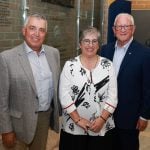PINCHER CREEK, Alta. — An arrowhead, bison skull or circle of stones that could be a teepee ring: such findings are not uncommon on Alberta farms and ranches.
Those who want their findings better identified or examined for potential archeological significance can easily do so, says Wendy Unfreed, regional archeologist with the Archeological Survey of Alberta.
Speaking at the Southern Alberta Land Trust Society meeting March 29, Unfreed said numerous archeological finds were exposed during recent Alberta floods, many of them along the Bow, Kananaskis and Highwood rivers.
Read Also

Field-by-field mapping could improve yield, productivity predictions
University of Saskatchewan researchers are using field border mapping to collect data on field variability, including problematic weeds, and to predict things like yields.
In fact, there are about 7,500 archeological sites in the grasslands region and along southern Alberta’s eastern slopes of the Rockies, and most of them predate the arrival of white settlers, said Unfreed.
Those who find an item or site they believe might be of archaeological value should first of all leave it alone and then record its location via GPS, photo, map, landmarks or other descriptors.
They should also avoid disturbing the area near the artifact or site.
“Context is important,” said Unfreed.
Discoverers should then call the Report a Find hotline at 780-438-8506 or email the archeological survey at Courtney.lakevold@gov.ab.ca.
Unfreed said the images will be reviewed, and an archeologist may then meet with the person reporting, visit the site and determine its historical value.
barb.glen@producer.com

















